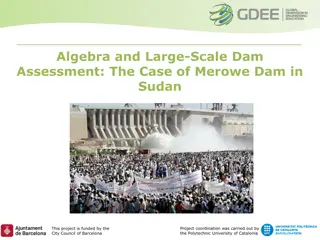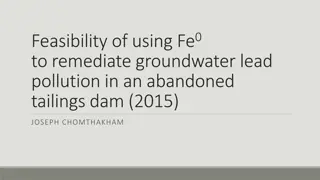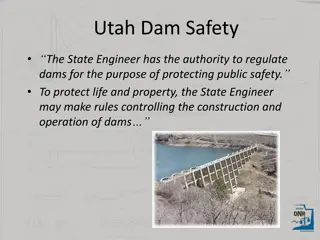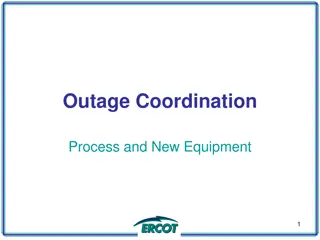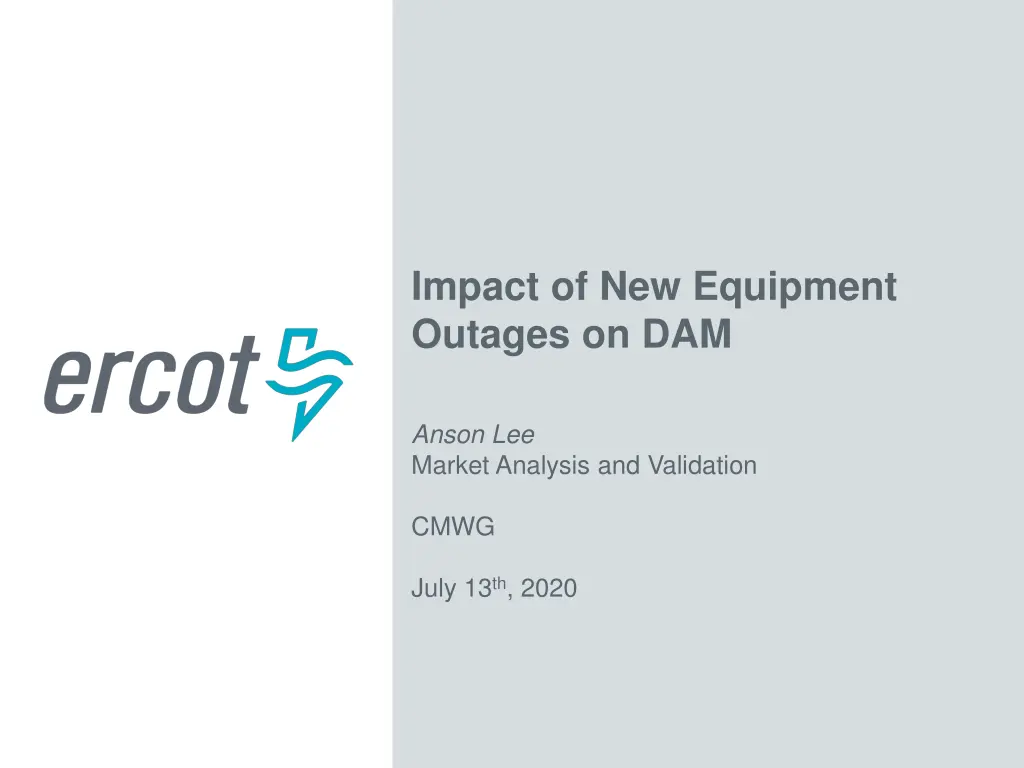
Impact of New Equipment Outages on Transmission System Analysis
Explore the impact of new equipment outages on the transmission system, focusing on outage extensions and early completion scenarios. The study period from January 2017 to June 2020 reveals insights into the challenges and dynamics of managing equipment energization outages.
Download Presentation

Please find below an Image/Link to download the presentation.
The content on the website is provided AS IS for your information and personal use only. It may not be sold, licensed, or shared on other websites without obtaining consent from the author. If you encounter any issues during the download, it is possible that the publisher has removed the file from their server.
You are allowed to download the files provided on this website for personal or commercial use, subject to the condition that they are used lawfully. All files are the property of their respective owners.
The content on the website is provided AS IS for your information and personal use only. It may not be sold, licensed, or shared on other websites without obtaining consent from the author.
E N D
Presentation Transcript
Impact of New Equipment Outages on DAM Anson Lee Market Analysis and Validation CMWG July 13th, 2020
Overview All the transmission outages relating to New Equipment Energization (NEE) Study Period: January 2017 and June 2020 Represents 10% of all Transmission outages (Second largest category after Other ) There are 7,797 distinct NEE transmission outages or 48,137 NEE-related transmission outage records (i.e. status update, start/end time update and etc.) during the study period Grouped Outage (3,090 or 39.63%) Grouped Outage could involve up to 58 equipment Each outage could have several extensions Number of extensions ranged from 1 to 21 65.23% (or 5,086) had no extension 34.77% (or 2,711) had at least one extension 18.6 % (or 1450) had at least two extensions 10.25 % (or 799) had at least three extensions 2 PUBLIC
Methodology Data New Equipment Energization Transmission Outages Outages which are either cancelled, withdrawn or rejected are not included Outages involving multiple equipment are treated as one if submitted together Outage extensions submitted on the same day are consolidated Use 10AM as date break instead of midnight. 6/1/2020 10AM 6/3/2020 10AM 2 hr 3 hr 4 hr 1 hr 3 hr 6 hr 1 hr 6/2/2020 10AM Assumption Actual end date is the exact time when the equipment came into service Three scenarios Outage extensions submitted after DAM Outages completed earlier than expected in DAM Outages completed later than expected in DAM Extension Late Early PUBLIC
Analysis Outage Extension Outage extension submitted after DAM If an outage extension is submitted after DAM deadline at 10AM, the topological change will not be modeled in DAM. Example: New equipment Outage A was scheduled to be completed on 6/1/2020 17:00. An outage extension was submitted on 6/1/2020 13:00 to extend outage to 6/2/2020 20:00. New Planned End Date 6/2/2020 20:00 Original Planned End Date 6/1/2020 17:00 DAM 5/31/2020 10:00 6/2/2020 00:00 Update time 5/31/2020 13:00 Outage Not modelled in DAM Percentage of New Equipment Outages with extension Extension submitted after DAM deadline at 10AM 152 (2.46%) out of 6,247 outage extensions Extended duration ranged from 7 minute to 18.56 days Median is 2.88 hours 4 PUBLIC
Comparison of Extended Outage Duration Longer term extension tends to be submitted ahead of time, while extension submitted after DAM deadline is mostly for shorter term extension (less than 12 hours) 5 PUBLIC
Analysis Outage Early Completion Outage completed earlier than expected in DAM If an outage is completed earlier than the planned end date seen in DAM, it will cause topological difference between DAM and Real-Time. Example: New equipment Outage C was scheduled to be completed on 6/1/2020 18:00. However, the outage work completed early on 6/1/2020 00:00. Outage Completed 6/1/2020 00:00 Original Planned End Date 6/1/2020 18:00 DAM 5/31/2020 10:00 Outage still modelled in DAM Percentage of New Equipment Outages with early completion Outage completed earlier than expected in DAM* 860 (11 %) out of 7,797 outages 385 (44.77 %) had prior extension(s)* Shortened duration ranged from 1 minute to 168 days** Median is 2.49 hours * With respect to the outage snapshot used for DAM for the operating day (i.e. 6/1/2020) ** Note: In this specific case, it was found that a new outage was submitted for the new equipment. 6 PUBLIC
Analysis Outage Late Completion Outage completed later than expected in DAM If an outage is completed later than the planned end date seen in DAM, it will cause topological difference between DAM and Real-Time. Example: New equipment Outage B was scheduled to be completed on 6/1/2020 18:00. However, the outage work was not completed until 6/1/2020 21:00. Original Planned End Date 6/1/2020 18:00 Outage Completed 6/1/2020 21:00 DAM 5/31/2020 10:00 Outage Not modelled in DAM Percentage of New Equipment Outages with early completion Outage completed later than expected in DAM* 943 (12 %) out of 7,797 outages 509 (53.98 %) had prior extension(s)* Delayed duration ranged from 1 minute to 11 hours** Median is 1.15 hours * With respect to the outage snapshot used for DAM for the operating day (i.e. 6/1/2020) ** Note: Real impact on DAM is between 0 to 24 hours 7 PUBLIC
Shortened vs Delayed Duration Median: 2.49 hours Median: 1.15 hours Completed Early Completed Later On Time 8 PUBLIC
DAM/RT NEE Outage Model Consistency 9 PUBLIC
Questions? 10 PUBLIC


